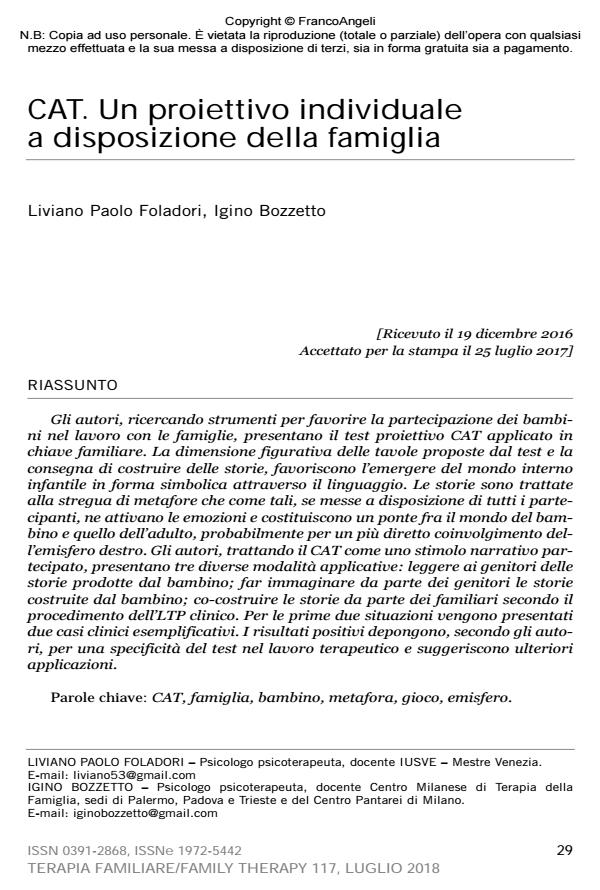CAT. A individual projective available to the family
Journal title TERAPIA FAMILIARE
Author/s Liviano Paolo Foladori, Igino Bozzetto
Publishing Year 2018 Issue 2018/117
Language Italian Pages 16 P. 29-44 File size 101 KB
DOI 10.3280/TF2018-117003
DOI is like a bar code for intellectual property: to have more infomation
click here
Below, you can see the article first page
If you want to buy this article in PDF format, you can do it, following the instructions to buy download credits

FrancoAngeli is member of Publishers International Linking Association, Inc (PILA), a not-for-profit association which run the CrossRef service enabling links to and from online scholarly content.
The authors, with the intention to find instruments to support children’s participation when working with families, present the projective CAT test in a familiar-applicated way. The figurative dimension typical of this test and the task to build some narrations, support the rise of the children’s internal world in a symbolical way through the language. Narrations are used as if they were metaphors and, once made available to all the presents, will activate their feelings and build a bridge between the chil- dish and the adult world, probably because of a major and direct involvement of the right hemisphere. The authors, reporting to the CAT as a narrative, participative incentive, present three different applicative procedures: reading to the parents their chil- dren’s narrations; allowing the parents to imagine what children’s narrations could be; allowing the relatives to co-build the narrations following the LTP cli- nical procedure. In the first two situations, two clinical, exemplifying cases will be presented. The positive results, according to the authors, give evidence to the specificity of this test in the therapeutic work and suggest further applications.
Keywords: CAT, family, child, metaphor, game, hemisphere.
Liviano Paolo Foladori, Igino Bozzetto, CAT. Un proiettivo individuale a disposizione della famiglia in "TERAPIA FAMILIARE" 117/2018, pp 29-44, DOI: 10.3280/TF2018-117003